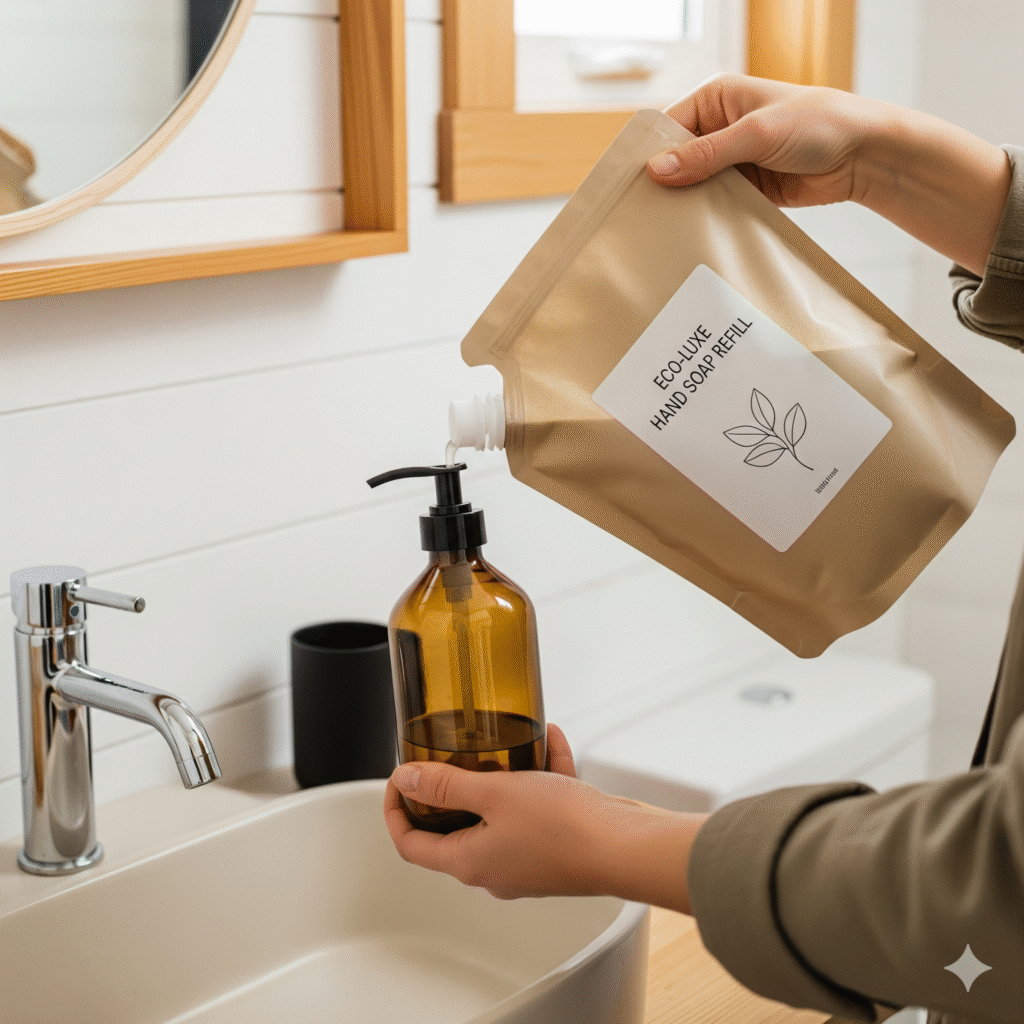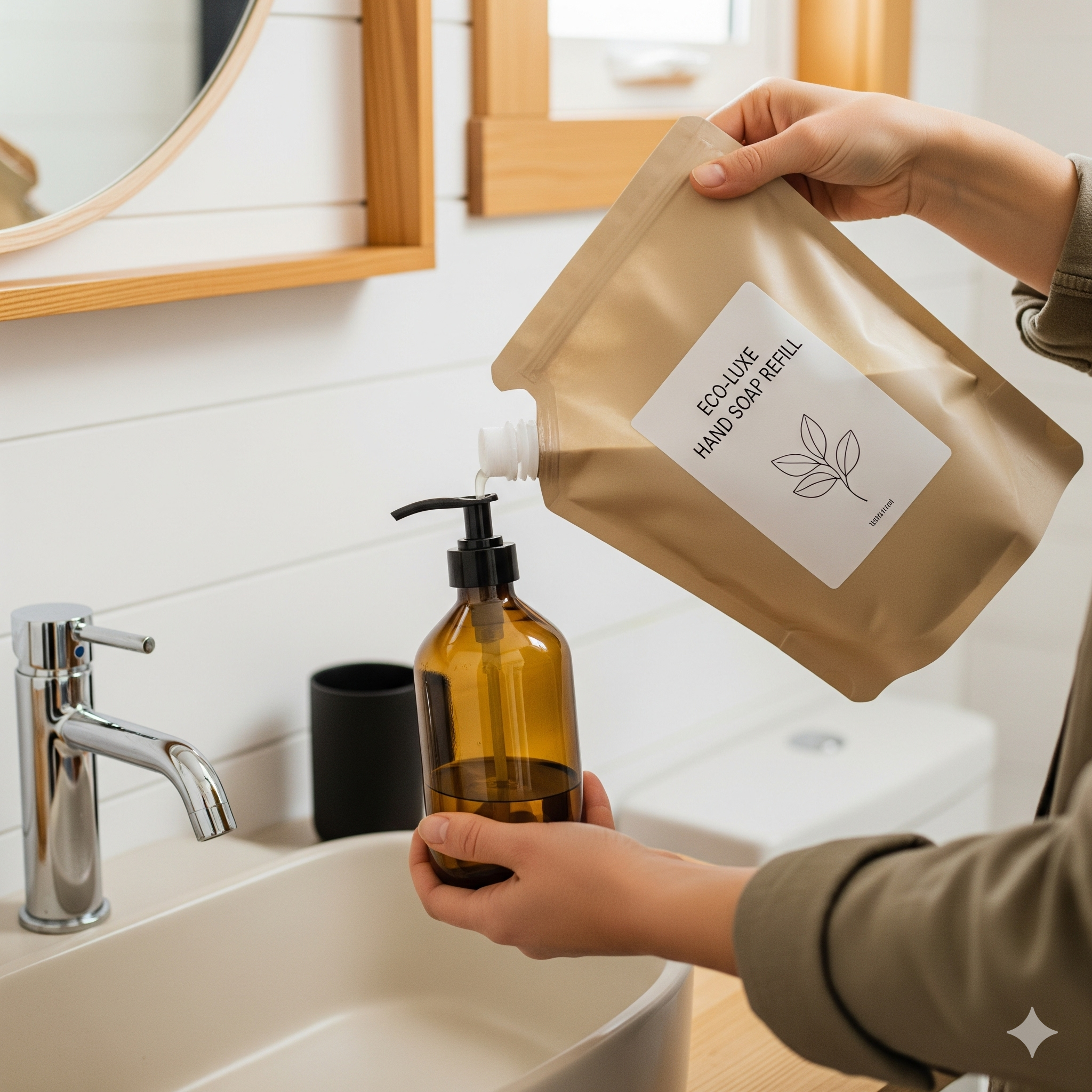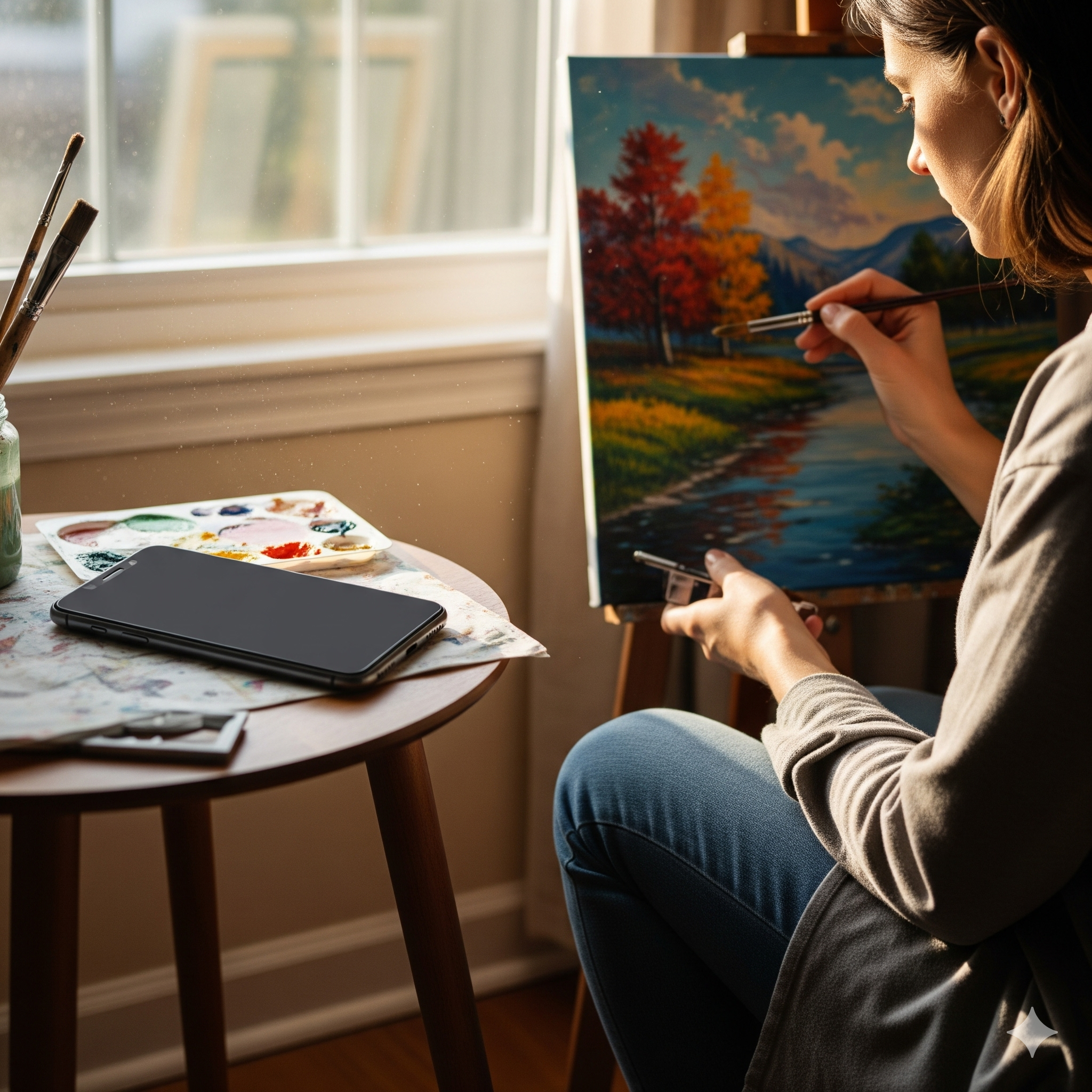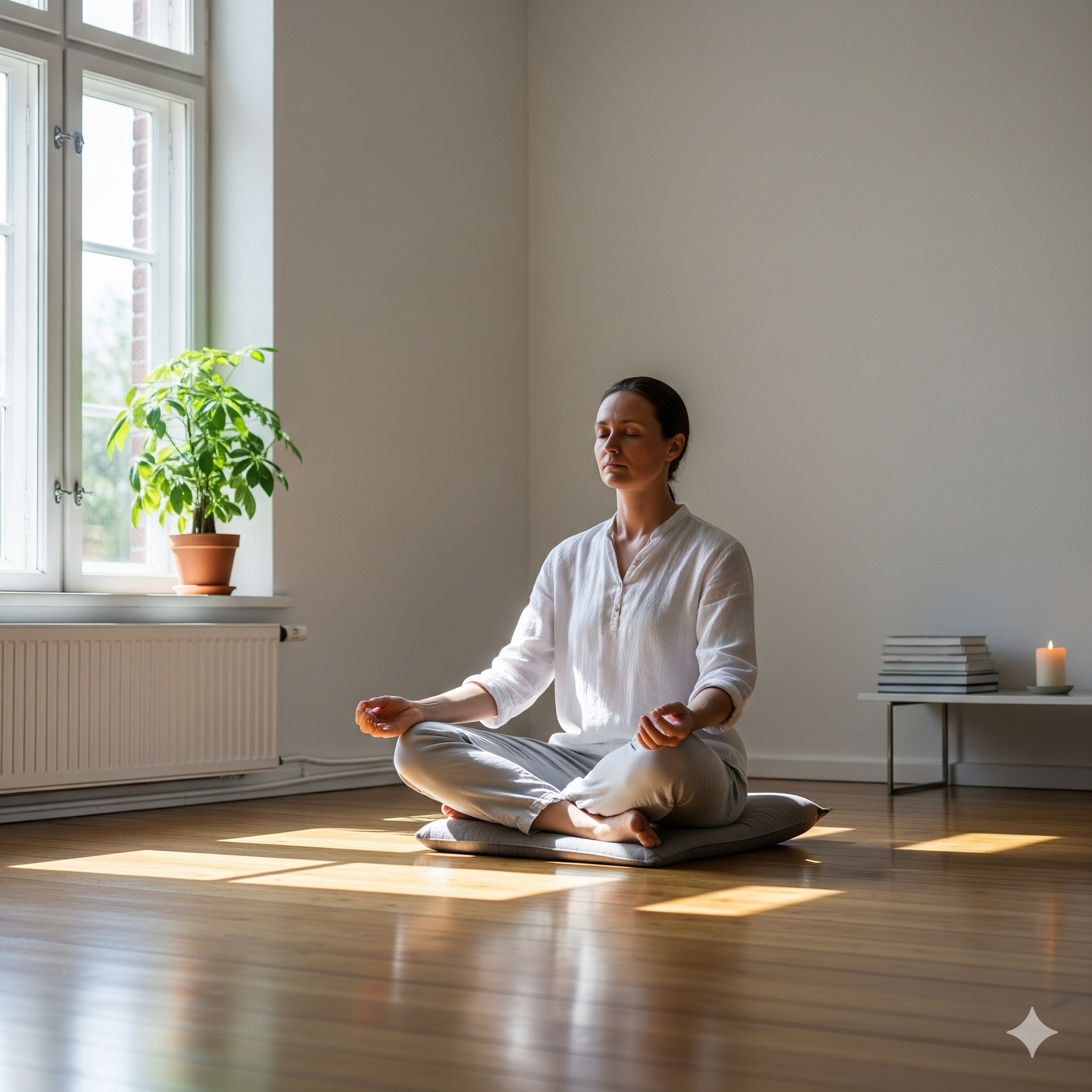Practical Zero Waste Swaps for Beginners
Discover 50+ practical zero waste swaps for beginners in our guide to sustainable living. Learn how to reduce plastic use in your tiny home today.
The Simple Path to Zero Waste: A Tiny Home Guide to a More Sustainable Life
There’s a beautiful synergy between tiny living and the zero-waste movement. Both are born from the same core philosophy: a desire to live more intentionally. As the founder of Neat Tiny Home, I’ve learned that living in a small space naturally forces you to become a conscious curator of your possessions. You simply don’t have room for mindless consumption. The zero-waste lifestyle takes this a step further, asking you to become a conscious curator of your consumption itself—from the food you buy to the products you use. It’s about minimizing your trash and, in turn, your environmental footprint. It’s a journey that can feel intimidating at first, but in a tiny home, it’s actually easier and more intuitive than you might think.
This is your complete, non-judgmental, and practical guide to starting that journey. We’re going to break down the concept of “zero waste” into manageable steps and focus on a huge list of practical zero waste swaps for beginners that you can implement right away. This is not about fitting a year’s worth of trash into a tiny mason jar overnight. It’s about making small, consistent changes that add up to a big impact. We’ll explore the principles of sustainable living, focus on the crucial goal of reducing plastic use, and provide a room-by-room guide to transforming your home into a more eco-friendly sanctuary. My goal is to show you that a low-waste lifestyle is not about deprivation; it’s about abundance—an abundance of intention, creativity, and connection to the planet.
The Synergy of Tiny Living and Zero Waste: A Perfect Match
Before we get into the swaps, let’s appreciate why tiny home dwellers are uniquely positioned for success on this path. The very act of downsizing forces you to confront your consumption habits head-on. You’ve already completed the biggest decluttering session of your life, so you’re intimately aware of the “stuff” you’ve accumulated. A tiny home provides less storage space, which naturally discourages impulse buys and bulk purchases of disposable items. You have a smaller space to clean, which means you need fewer cleaning products. Your kitchen is smaller, which encourages more mindful meal planning and less food waste. The philosophies are perfectly aligned. Both tiny living and zero waste are about prioritizing experiences over things, quality over quantity, and intentionality over excess. They are two sides of the same beautiful, minimalist coin.
It’s a Journey, Not a Destination: The 5 R’s of Zero Waste
The term “zero waste” can sound absolute and intimidating. I prefer to think of it as “low-waste living.” The goal is not perfection; it’s progress. The foundational framework for this journey is the 5 R’s, popularized by the godmother of the modern zero-waste movement, Bea Johnson, author of “Zero Waste Home.” They are hierarchical, meaning you should try to do them in this order:
- Refuse: This is the most powerful “R.” Learn to say “no” to things you don’t need—freebies, plastic straws, disposable cutlery, flyers, etc.
- Reduce: Consciously reduce what you do need. This means buying less and choosing items with minimal or no packaging.
- Reuse: For the things you do need, choose reusable options over disposable ones. This is where the swaps come in.
- Recycle: This is a last resort for items you cannot refuse, reduce, or reuse. View recycling not as a solution, but as a final safety net.
- Rot: Compost everything else. Food scraps and other organic matter can be turned back into nutrient-rich soil.
The Starting Point: Easy, High-Impact Zero-Waste Swaps for Beginners
The key to building any new habit is to start with easy wins that have a big impact. In the world of zero waste, this means tackling the most common single-use plastics. These are the “low-hanging fruit” of waste reduction. By focusing on these few items, you can build momentum and confidence for the journey ahead. These are the first and most practical zero waste swaps for beginners.
The “Big Four”: Refusing Plastic Bags, Water Bottles, Coffee Cups, and Straws
These four items are some of the most pervasive and unnecessary sources of plastic pollution. Making a commitment to refuse them is a powerful first step.
- Plastic Bags: Get into the habit of always carrying a reusable tote bag. Keep them in your car, by your front door, and a small, foldable one in your purse or backpack so you’re never caught without one.
- Water Bottles: Invest in a high-quality, reusable water bottle and make it your constant companion.
- Coffee Cups: Disposable coffee cups, even the paper ones, are lined with plastic and are not recyclable. Bring a reusable travel mug to your favorite coffee shop. Most cafes even offer a small discount for doing so.
- Straws: Simply say “no, thank you” to straws when ordering a drink. If you love using a straw, you can carry a reusable one made of stainless steel, glass, or bamboo.
A Comprehensive List of Practical Zero-Waste Swaps for Beginners
Ready to go deeper? Here is a room-by-room list of simple, effective swaps you can make to drastically reduce the waste in your tiny home. This is your go-to cheat sheet of practical zero waste swaps for beginners.
| Room | Swap This (Disposable) | For This (Reusable/Sustainable) |
|---|---|---|
| The Kitchen |
|
|
| The Bathroom |
|
|
| On-the-Go |
|
|
The Zero-Waste Kitchen: The Heart of Your Sustainable Home
Your kitchen generates the most waste of any room in the house, which means it also holds the most opportunity for change. Creating a zero-waste or sustainable kitchen is all about shifting from packaged and processed to fresh and whole, and from disposable to reusable.
Food Shopping: Farmers’ Markets and Bulk Bins
The best way to avoid packaging is to shop at places where food is sold without it. Your local farmers’ market is a fantastic resource. You can bring your own reusable produce bags and totes and buy fresh, local produce completely package-free. The other superpower is the bulk bin section of your grocery store. You can bring your own clean, lightweight cloth bags or glass jars (make sure to get the “tare” weight at customer service first!) and fill them with everything from rice and pasta to nuts, spices, and even olive oil. This is a game-changing habit for reducing plastic use. For great resources on finding bulk stores near you, the blog Litterless has an incredible international directory.
The Zero-Waste Bathroom: Simplifying Your Personal Care Routine
The bathroom is another area that is typically a graveyard for single-use plastic. From shampoo bottles to toothpaste tubes, almost everything is designed to be thrown away. The zero-waste approach here is about simplifying your routine and switching from liquids in plastic bottles to solid, package-free bars.
In the Shower: The Magic of Bars
One of the easiest and most impactful swaps is switching to solid bars for your hair and body. A shampoo bar can replace 2-3 plastic bottles of liquid shampoo. The same goes for conditioner bars and simple, package-free bars of soap for your body and face. Not only do these eliminate plastic waste, but they are also fantastic for tiny home living and travel as they are compact, lightweight, and spill-proof. You can find beautiful, high-quality options from brands like Ethique or at online zero-waste retailers like Package Free Shop.
Navigating the Challenges of a Zero-Waste Journey
This journey is not always easy. We live in a world that is built on convenience and disposability. There will be times when you forget your reusable mug or can’t find a package-free option for something you need. That is perfectly okay. The goal is not to be a perfect zero-waster; it’s to be a conscious consumer. It’s about making better choices whenever you can.
The Financial Aspect: Investing in Reusables
There can be an initial upfront cost to some of these swaps. A safety razor is more expensive than a disposable one. A set of silicone Stasher bags costs more than a box of Ziplocs. However, it’s crucial to see these as investments that will save you a huge amount of money over time. Once you buy a reusable item, you may never have to buy its disposable counterpart again. For more on the long-term savings of a low-waste lifestyle, I love the perspective of Anne-Marie Bonneau, the Zero-Waste Chef, who champions a simple, frugal approach.
The journey to a zero-waste lifestyle is a beautiful and empowering one. It connects you more deeply to your food, your home, and your impact on the world. Start with one small swap, and see where the journey takes you.
Frequently Asked Questions (FAQ)
This seems really expensive. How can I do this on a tight budget?
This is a huge misconception. While some swaps have an upfront cost, the zero-waste lifestyle is, at its core, incredibly frugal. The most powerful “R” is “Refuse,” which costs nothing. Focus on the free things first: refuse straws, use the jars you already have for food storage, cut up an old t-shirt to make cleaning rags. Don’t feel pressured to buy all the trendy “zero-waste” products. The most sustainable option is always to use what you already have.
What do I do with the plastic items I’m replacing? Do I just throw them all away?
No, please don’t! That would be counterproductive. The rule is to use up what you already have first. As you run out of your bottled shampoo, paper towels, or Ziploc bags, replace them with their sustainable alternatives. This “use it up” approach is the most responsible and least wasteful way to transition.
I don’t have access to good bulk stores in my town. What can I do?
This is a real challenge for many people. The key is to focus on making the best choices available to you. Buy the largest container of something you can find to reduce packaging over time (e.g., a large jug of olive oil vs. a small plastic bottle). Choose items packaged in glass or metal over plastic, as they are more easily and effectively recycled. And focus on the areas you can control, like your personal care routine and refusing disposables when you’re out and about.





Post Comment